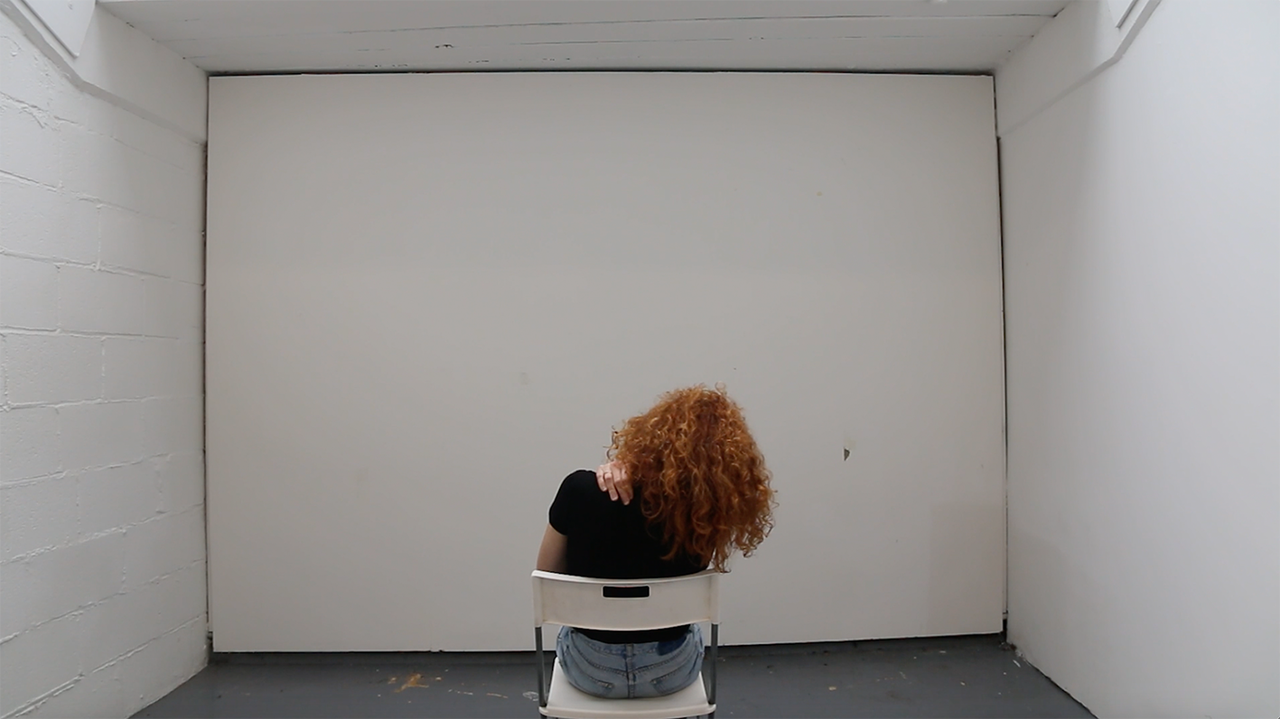RECORD AND REFLECT A Questionnaire on (Video) Lectures – by Sophie Seita

Sophie Seita, „Turning Your Back On“
QUESTION: You were free to choose the topic of your contribution. What did you decide on in connection with the theme of this issue and why?
ANSWER: Backs. Because, as I say in the piece, they ask for a different kind of attention.
Q: This issue makes a distinction between lecture and lecture performance. Do you? Where and how do you draw the line?
A: I wrote an essay-cum-manifesto about lecture performances not that long ago, so I don’t want to repeat myself here. As I suggested in that piece, one of the distinctive features of the lecture performance is that it plays with form (the form of writing, generic expectations, the ways it engages the senses); it often self-reflexively performs form. A lecture performance might use materials, objects, costume, or gestures as structures of argument or sensorial-performative cues; it leans into different affects or moods or tones, and it might appear in different social or institutional contexts and reflect on those same contexts, and thus offers a unique epistemic perspective.
Q: What specific forms of knowledge do academic or artistic lecture formats offer?
A: Any lecture performance I write/present is about the how of knowledge. A lecture performance offers what I’ve enlisted elsewhere as “the associative, the speculative, the mystical, the nonlinear, the visual, the aural, the experiential, the sensual, the sensorial, the embodied.”[1] For me, there’s such a thing as poetic knowledge or performative knowledge: the very specific thinking-feeling that poetic acts of language or live performances do or enable. As such, a lecture performance furthers metacognition. Another way of looking at it would be through negation: to say what it does not offer is purely factual knowledge. A lecture performance troubles whether factual knowledge even exists quite so purely, because all knowledge is contingent on discursive practices, belief systems, social systems, availability of tools or new perspectives, etc. So maybe it reminds us that all knowledge is provisional.
I say all this lovingly, because traditional lectures have been given such a bad rep, and I’m actually someone who has always enjoyed sitting through the drawn-out and mysterious meanderings of someone else’s mind. I don’t have a problem with being overwhelmed or confused, I just can’t stand drabness and mediocrity.
Q: Which aspects of embodiment are important to you when giving a lecture/performance?
A: Prosody. Rhythm. Tempo. Gesture. Posture.
Q: How do you find your rhythm?
A: I usually write rhythm into my lecture performances or performances. I try to attune myself to the rhythm of language – be directed or choreographed by it. If I ever feel like I’m losing that rhythm, I internally (and invisibly) work with some somatic techniques to ground myself.
Q: Where is your focus during the lecture/performance?
A: On my back.
Q: What motivates you to attend a lecture/performance in person, given the constant surplus of information and art and the shortage of time that characterize our everyday lives?
A: Lecture performances and performances don’t provide us with “information” – that’s not their business. I’m happy to read or watch traditional lectures online, but good lecture performances and good performances need to be seen live if possible – because of the energetic field they set up. They transform space. They change our perception of time. When I watch a very good performance or when I do a performance myself and it’s going well, it’s a quasi-spiritual experience. I once called this “informed enchantment,” or “Bertolt Brecht but with the fairy lights” – that is, an experience that might include alertness, critique, and distance that doesn’t foreclose the magic.
Q: Which lecture/performance was particularly memorable for you and why? (If the answer is Robert Morris’s 21.3 from 1964, please give another example.)
A: Gordon Hall’s AND PER SE AND (2016) and “Read me that part a-gain, where I disinherit everybody” (2014) because of the way they use objects as an occasion for language.
This summer, I saw a lovely lecture performance by Nicole L’Huillier at TROPEZ in Berlin. Nicole actually called it a listening session, but for me it was clearly situated within artistic research practices that imaginatively utilize discursive language within a live context to bring audiences into their own bodies and senses to induce a different state of receptivity.
Q: Who was your (real or imagined) audience when you recorded this video lecture?
A: I don’t know, because I’m facing away from them. I’m relaxing into the form. Dogs turn their backs to other dogs or people to show they are not a threat and don’t consider you a threat. I naturally think of my collaborators, my artistic community, my students (past and present), but in truth, I can’t possibly imagine who might draw sustenance or joy or inspiration from this, because the work must always exceed my desire for its reach.
Q: What shoes were you wearing?
A: Shoes with heavy soles that hit the ground to set the rhythm.
Sophie Seita is a London-based artist and researcher whose practice is grounded in language and performance but swerves voraciously into other mediums, such as sound, video, textiles, drawing, and installation. Her work operates under a type of queer abstraction that’s emmeshed with a grammar of relationality, exploring the politics that reside within language and aesthetic form. She teaches in the Art Department at Goldsmiths and recently held the Werner Düttmann Fellowship at Akademie der Künste, Berlin.
Note
| [1] | Sophie Seita, “Playing with Knowledge: On Lecture Performances,” TDR: The Drama Review 66, no. 3 (September 2022): 78–95. |

